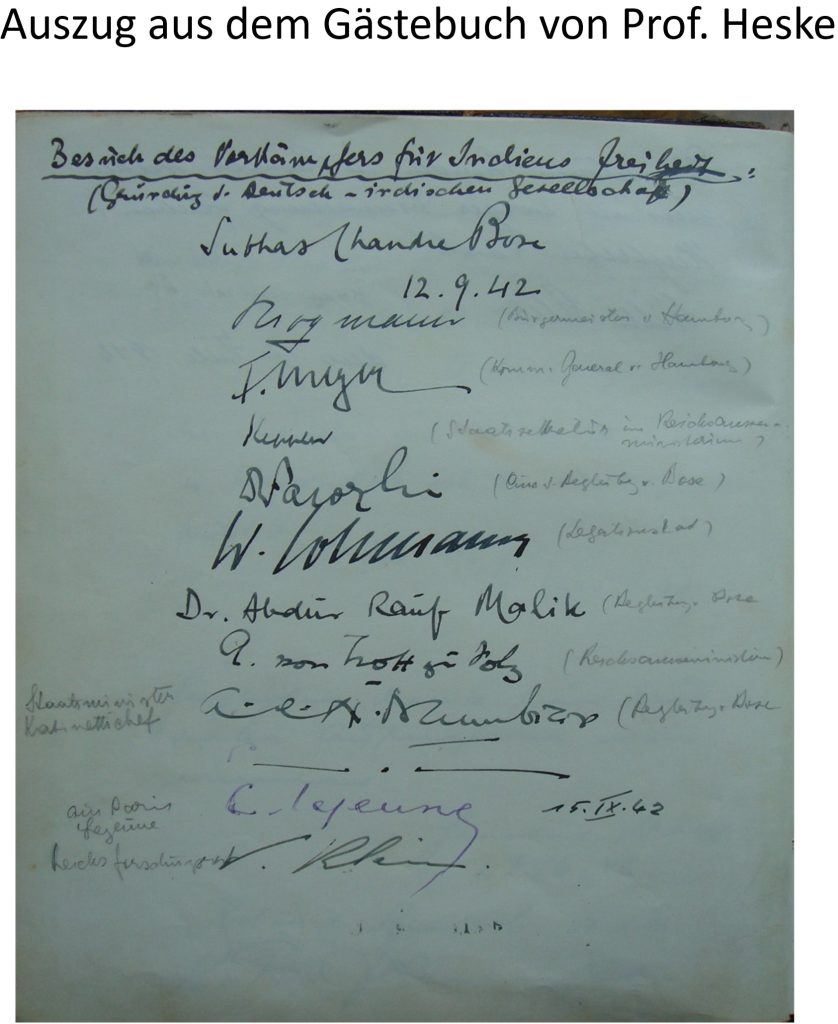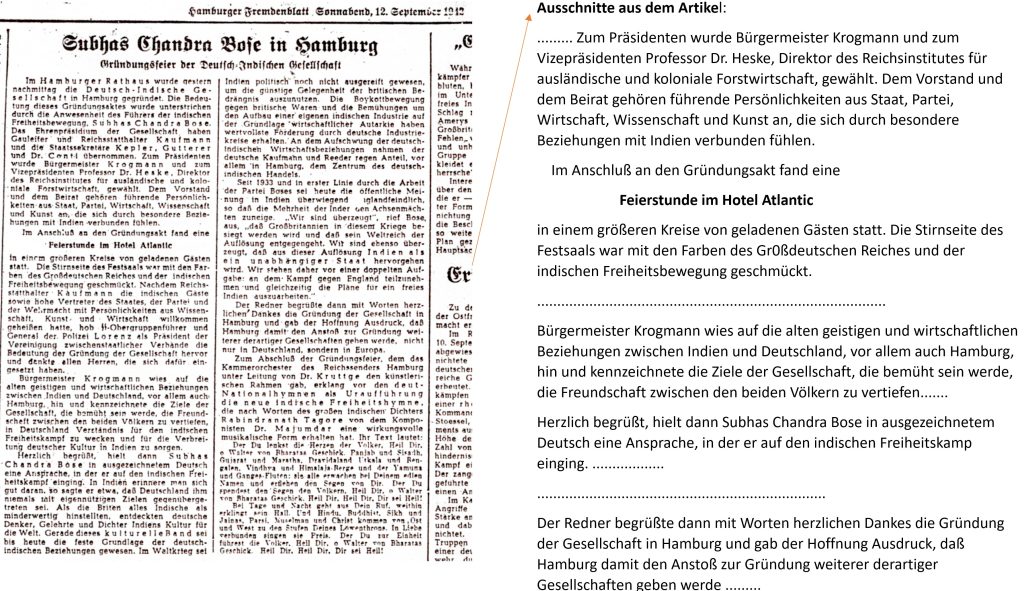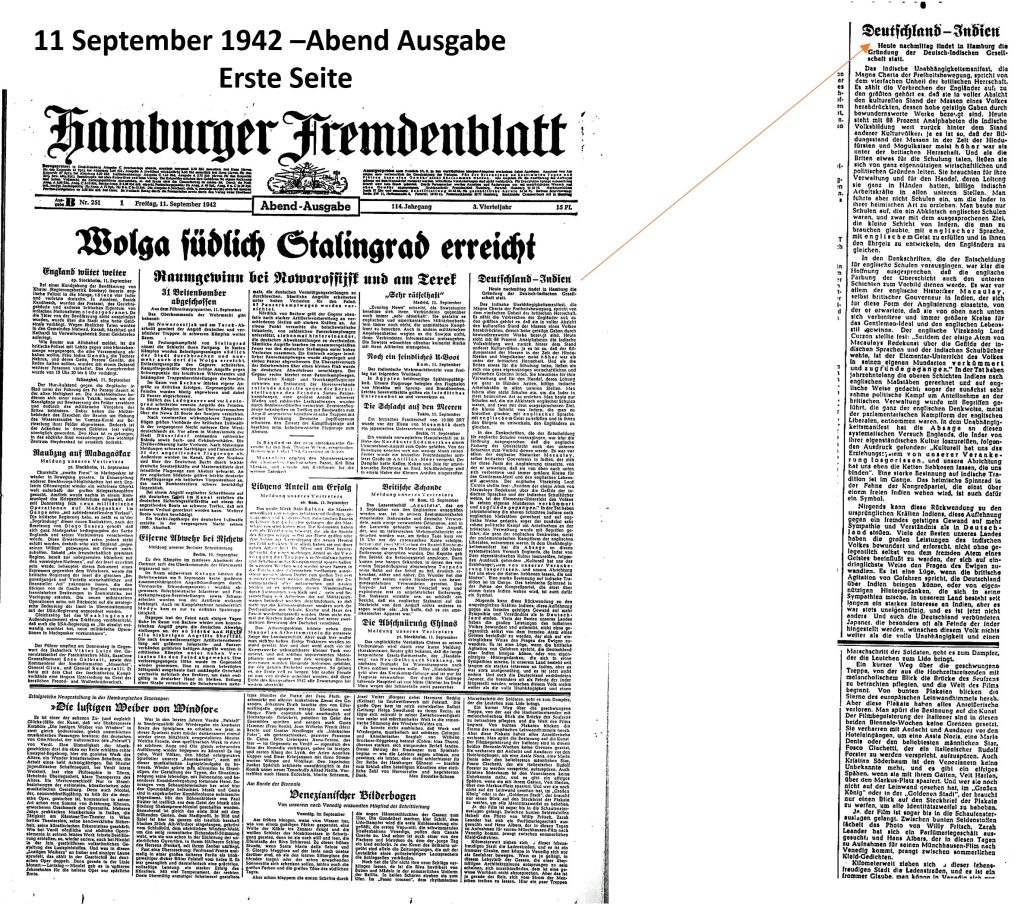11. September 1942
Hotel Atlantic Hamburg, Deutschland
Founding of the Deutsch-Indische Gesellschaft
&
Birth of the Indian national anthem in Hamburg, Germany
Original recording of “Jana Gana Mana”, performed by the Hamburg Radio Symphony Orchestra, Germany, 1942 in the presence of Netaji Subash Chandra Bose
The Historic First Performance of India’s National Anthem in Hamburg
On September 11, 1942, the future Indian national anthem, “Jana Gana Mana,” was performed publicly for the very first time—at the founding ceremony of the German-Indian Society (Deutsch-Indische Gesellschaft) held at Hamburg’s iconic Hotel Atlantic.
The anthem’s text is based on a poem and musical composition by Rabindranath Tagore, the Nobel Laureate in Literature (1913) from West Bengal. The orchestral arrangement of Tagore’s piece was created by Dr. Majumdar, an Indian composer who personally attended the premiere that evening in Hamburg.
Interestingly, less than two kilometers away at the Streits Hotel—also located along the Alster—another significant musical debut had taken place 101 years earlier. In 1841, the song “Deutschland, Deutschland über alles” (later known as the German national anthem) was sung for the first time by members of the Hamburg Gymnastics Club and the Hamburg Liedertafel of 1823, with lyrics by August Heinrich Hoffmann von Fallersleben.
This remarkable coincidence—two future national anthems of India and Germany first performed in the same city, separated by a century—symbolizes a unique parallel in the nations’ respective paths toward unity and independence.
A prominent participant at the 1942 founding event was Subhas Chandra Bose, leader of the Indian independence movement’s armed struggle wing. In his address, Bose expressed his firm belief that India would emerge from the Second World War as a free and independent nation.
During the war, Bose had traveled to Germany seeking political and military collaboration in support of India’s liberation from British rule. Although these efforts did not achieve their intended outcomes, he later returned to Asia via a German submarine to continue his mission.
The founding ceremony, though officially registered in Hamburg, was conceived as a national initiative rather than a local one. Attendees included representatives of the German Foreign Office—among them Dr. Adam von Trott zu Solz, later executed for his role in the resistance against Hitler—as well as officials from the Free and Hanseatic City of Hamburg, and distinguished members of Germany’s academic and business communities.
While the society’s leadership—its executive committee, board, and advisory council—consisted entirely of Germans, a number of Indian representatives were also present. Under the political circumstances of the time, their participation can be seen as a symbolic gesture of solidarity with India’s struggle against colonial rule. Among them was the aforementioned Dr. Majumdar, whose music gave voice to India’s emerging national identity.
After World War II
the German-Indian Association (Deutsch-Indische Gesellschaft, DIG) was re-established in 1953 in Stuttgart. In the years that followed, branch societies were founded in many German cities – including Hamburg (see below).
The German-Indian Association Hamburg e.V. serves as a meeting place between two cultures. It provides a forum for information, dialogue, and personal exchange among people who are engaged with India and interested in its people, cultures, languages, religions, history, politics, economy, and society.
Our program includes regular meetings, excursions, lecture series, cultural events, and the celebration of Indian and German festivals.
We are equally fascinated by the classical and the popular, the historical and the contemporary aspects of India – in short, by all dimensions of Indian life.
Through our concerts, cultural performances, and lectures on diverse topics, we aim to foster and deepen the relationship between Germany and India.
Media





